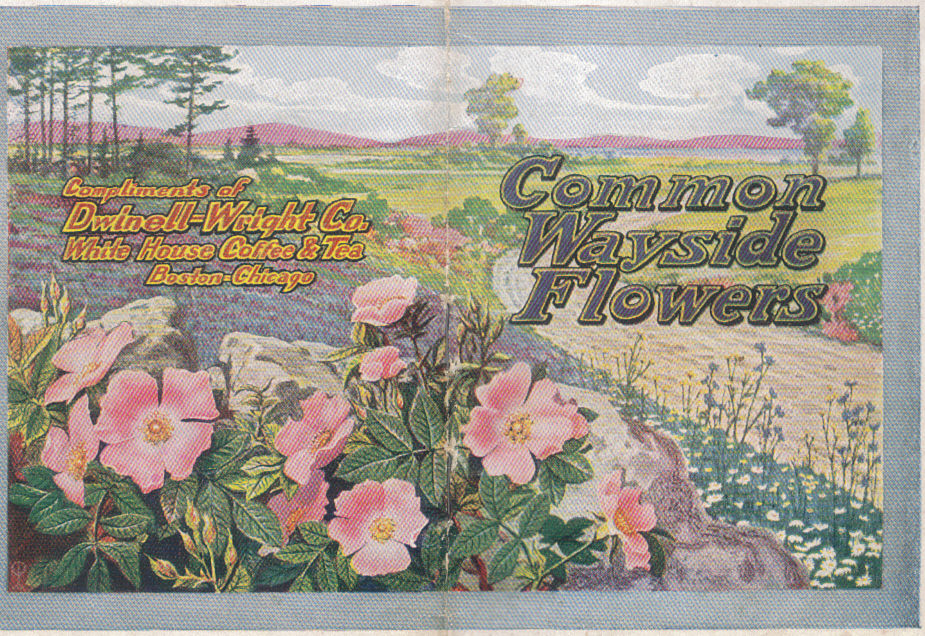Back in August 1916, a Boston-based beverage producer, the Dwinell-Wright Company, published an illustrated brochure, “Common Wayside Flowers” to promote its White House brands of coffee and tea. Ninety-six years later, my daughter discovered it in a box of postcards at a country antique shop.
With the exception of product ads on the inside of the front and back pages, the three by four inch booklet is devoted to plants. Each of the forty-seven entries contains Latin and common names, habitat and geographic range information and assorted factual tidbits. The illustrations of flowers, leaves and sometimes roots are good quality and in full color.
The entry for “Common Blue Violet” is a good example:
Common Blue Violet—Viola palmata. The best loved and the best known of the early wild flowers. Found in eastern United States fields and open, grassy woodlands. Blooms April to June. Mahomet preferred the Violet to all other flowers, and it was chosen by the Bonapartes as their emblem.
The little booklet, with its quaint name, is a throwback to an earlier time when companies used brochures or small cards packed with products—baking soda, tea or cigarettes—to instruct while reinforcing brand loyalty and repeat purchasing. I remember the Roger Torrey Petersen bird cards that came in boxes of Red Rose Tea in my childhood. My card collection is long gone, which may be why I take so much pleasure in “Common Roadside Flowers.”

